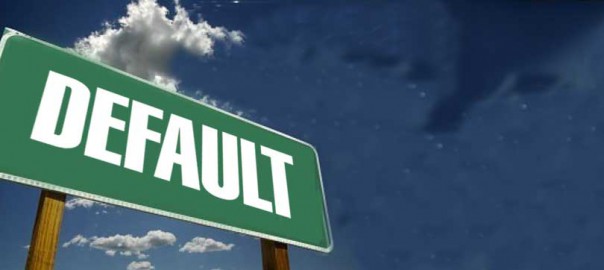The American Public has, again, been treated to another replay of the “debt ceiling” debate. As usual, we had arguments regarding the wisdom and necessity of raising the debt limit. I sense that few Americans pay attention to the noise, as growing and expanding budget deficits have become a part of standard operating procedure for the Federal Government. For those who did follow the days after the President signed the legislation, — they noticed the United States National Debt went up $339 billion in “one day.” This “one day” increase surpassed the previous record of $328.2 billion set in October 2013, — right after another “debt ceiling” crisis. It is obvious that the money had already been spent, and the crisis point had been reached months before. “On paper, the national debt was frozen at $18.1 trillion since March. During this period, the department (Department of the Treasury) deferred payments to pension funds and borrowed from reserve accounts in order prevent government shutdown.” (Reference: http://theposhreportonline.co/us-national-debt-up-by-339bn-in-one-day/)
You see, the “debt ceiling” increase had already been baked in the cake. Nothing had been done since October of 2013 to rein in the growing deficits, and our Representatives, Senators, and Executive Branch all knew it. I love the explanation of how this was done, — “On paper, the national debt was frozen,” and the Department of the Treasury “deferred payments to pension funds and borrowed from reserve accounts.” In other words, government officials used some creative accounting to cover up the fact that it had insufficient funds to fulfill its social contracts for seven months, — until, of course, we could borrow more money to cover the shortfalls. If this were a private company, how would rating agencies, like Fitch / Moody’s / and Standard & Poor’s, view this activity? I think I know. “Gee, — Mr. Rating Agency, I just defaulted on my payments to the pension fund so I could fund on-going operations. Oh yea, and we borrowed from some “loss reserve” funds too. That is, of course, until the Board of Directors authorized an increase in our ability to borrow more money to fund our unsustainable business model!” This simply would not fly in the private sector.
The argument for continually increasing the debt ceiling goes like this, — “If we don’t, the US Government will be unable pay its bills, and will default on its obligations.” The real question should be, “What constitutes default?” Until recently, a “default” was an event. A default would occur when a debtor was unable to meet his/her contractual obligations with a creditor. The consequences of the default were written into the “debt instrument,” and action would be taken by the creditor to exercise his/her rights to recover any remaining principle, penalties, and legal fees.
Another form of “default” has been discussed in recent history, — that of “structural default.” Finding a definition of “structural default” can be difficult, as it is not in a dictionary. Entire finance papers are written on the subject. The best description of “structural default” that I could find is this, — “structural default occurs when the “firm value” passes an “exhaustive barrier”, — the idea of “firm value” generally applies to a “derivative” who’s value is determined by an underlying asset. (Reference: http://citeseerx.ist.psu.edu/viewdoc/download?rep=rep1&type=pdf&doi=10.1.1.139.6832)
One example would be that a Treasury Bond is a derivative of the United States Government’s ability to collect taxes from its citizens, — our government’s source of revenue,— and, I might add, the citizens ability to pay taxes. Another example would come from the housing crisis beginning in 2008, where mortgage backed securities were derivatives of a number of mortgages bunched in tranches. The point being, default doesn’t just happen at a debt’s maturity. Default can happen prior to maturity. The difficulty of declaring “structural default” is knowing when the “exhaustive barrier” has been breached. In the case of the mortgage crisis, the “models” used by the banks & bond traders were flawed. Thus, the facade of solvency in the mortgage backed security market went on much longer than it should have. They were perceived as AAA rated debt instruments, — nearly without risk, — when in reality they were debt bombs that almost blew up the entire financial system. (A great book on the mortgage crisis is “The Big Short — Inside The Doomsday Machine” by Michael Lewis, copyright 2011.)
Modeling for “structural default” is in reality, “risk assessment.” It used to be “risk assessment” was a function carried out prior to the issuance of debt. When one applied for a loan at the bank, a financial statement was completed, credit and employment history assessed. The bank then decided your credit risk, and made decisions on terms and interest rates based on the level of risk, — or made the decision to not lend the funds at all. Current interest rates on United States debt are at historic lows, reflecting very low risk. What happens to our budget deficits if interest rates surge?
The reserve currency status of the United States Dollar allows us many privileges, but — also opens it up for abuse. One abuse is the ability to create more currency units at will, giving us the ability to pay debts through a devalued currency. In other words, we pay back less than we borrowed. Is that a form of “structural default?” Will creditors continue to purchase our debt under this paradigm?
Where is the United States today financially? If we are borrowing to fund obligations on a continual basis, — if more currency units (dollars) need to be created to pay our bills, — if there is no end in sight, — have we crossed the “exhaustive barrier” and are we already insolvent? Has “structural default” already occurred, and we only have the facade carrying us forward? Is a debt bomb in our future? How long can this continue? The problem with being a debtor is that it is out of our hands. The creditors will ultimately decide.


